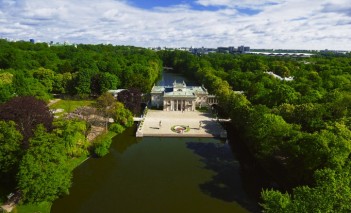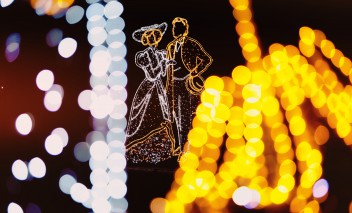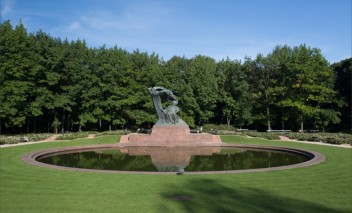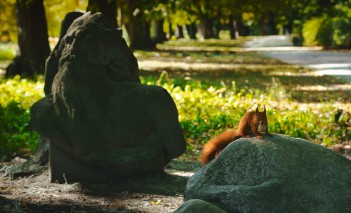Exhibition of Thracian gold from the collections of the National History Museum in Sofia

Insignia from mid-4th century B.C. belonging to the ruler of one of the Thracian tribes – a wonderful golden wreath, golden rosettes and a golden ring with a stamp – will be displayed in the Palace on the Isle from 1 to 31 May 2018. They are part of the Thracian golden treasure set unearthed during the survey of an ancient burial mound in northern Bulgaria.
The exhibition "Insignia of Power. Thracian Gold from the Collections of the National History Museum in Sofia" has come to life as a result of the cooperation between the Royal Łazienki Museum, the National History Museum in Sofia and the Bulgarian Cultural Institute. The exhibition – displayed in our Museum as part of the Bulgarian Season, is under the honorary patronage of the Bulgarian Embassy.
The exhibition will be open in the Palace on the Isle from Tuesdays to Thursdays from 10.00 to 18.00, on Fridays from 10.00 to 20.00 and on Saturdays and Sundays from 10.00 to 18.00. From 1 to 8 May, admission to the exhibition will be free, and on subsequent days, a ticket will be required to enter the Palace on the Isle (Thursdays are the day of admission-free visits).
How the Thracian gold was discovered
The Thracian golden treasure was unearthed in the Great Burial Mound located near the towns of Malamirovo and Zlatnica in Bulgaria, where – in the summer of 2005 – a perfectly-preserved tomb of a ruler and hero from mid-4th century B.C was discovered. It was the burial ground of a young, athletic man, 185-190 centimetres tall. The discovery led to the finding that the ruler, who lived in the mid-4th century B.C. died at the age of 18 or 19. We can state with a high degree of certainty that he was the son of the Thracian king Kersobleptos and most likely died fighting the army of Philip II of Macedon during the latter’s invasion of Thracia between 341 and 339 B.C.
The grave found in the Great Burial Mound is among the most valuable archaeological discoveries in Thracia. The objects found inside are of great scientific and artistic value.
Insignia of Power of the Thracian Hero
The following insignia of the Thracian ruler and hero are presented in the Royal Łazienki: the wonderful golden wreath, which crowned the head of the deceased, golden rosettes from his leather diadem, and a large ring with a stamp, found on the little finger of the left hand of the man.
The wreath is composed of three interconnected olive tree branches adorned with 70 leaves cast from a mould. The have an elliptic shape, considerably extended in the upper section. Olives have been placed between the two rows of leaves. The decorative part of the front of the wreath depicts the goddess of victory, Nike, wearing a long chiton tied at the waist with a belt. In her left hand – held downwards, in line with her body – is a wreath, and in her right hand, a phiale.
The chain consisting of 29 golden rosettes adorned the leather strap, which rested – together with the wreath – on the head of the deceased ruler. The diadem was not only a decoration, but also a Thracian symbol of authority.
The shank of the golden stamp-ring was made of a large wire with a round cross section. The plate of the stamp contains an engraved depiction of the Great Mother Goddess handing a phiale to the horse rider coming to meet her. The ring was used for a long time; the internal part bears traces of repair by welding.
Armour of the Thracian Ruler
In the burial mound, archaeologists have also found a full battle armour of the ruler-fighter – an iron sword with a wooden hilt with the head of a griffin at its end, decorated with silver nails; 200 bronze arrows; seven lances; an iron woven scale armour adorned with three silver appliques, as well as a bronze helmet. For the first time in Thrace, a leather helmet liner was discovered, dyed in purple. One of the most valuable objects placed in the tomb was the ceremonial poleyn made of gilded silver. The poleyn is fully covered with sculptures depicting a mythical and religious tale of the deceased ruler. It is one of the most beautiful creations of Thracian metalwork.
The grave also contained two silver rhytons, which can be regarded as world-class treasures of ancient metalwork. The rhytons – conically-shaped receptacles used for drinking wine – are adorned with heads of deer at their ends. They were made with utmost precision and virtuosity, testifying to the artistic mastery of their makers. All sculpted elements of rhytons are gilded.







